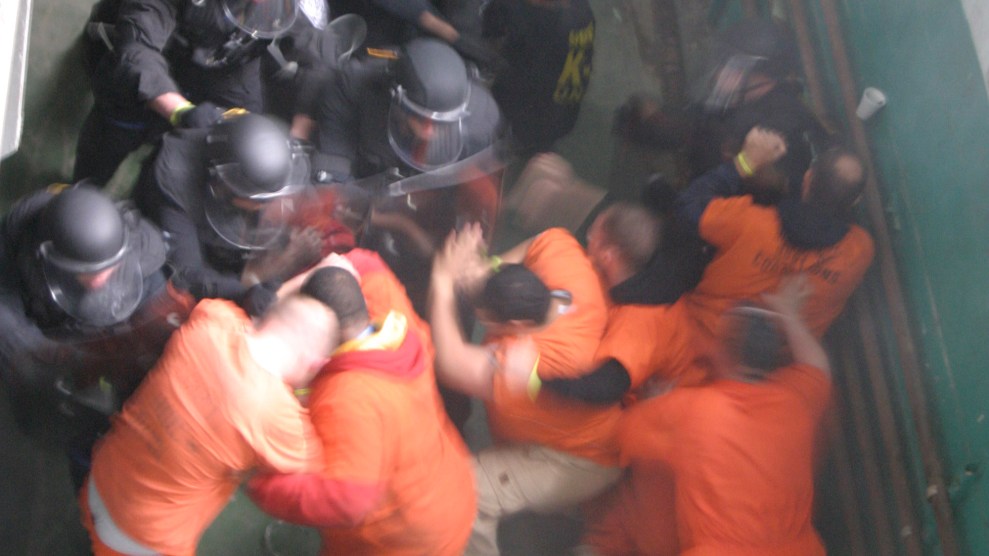
Corbis/Bettmann
1773 New-Gate Prison, Connecticut
The first recorded American prison riot breaks out in a converted copper mine also called “Simsbury dungeon.”
1824 Massachusetts State Prison
Three hundred inmates riot in the mess hall; 30 Marines march in and restore order.
1959 Montana State Prison
In the third major riot in a decade, three inmates lead a 36- hour prison takeover until the state National Guard intervenes.
1971 Attica Correctional Facility, New York
The death of a black inmate and dire living conditions (one shower a week, one roll of toilet paper a month, facility at 140 percent capacity) spark a mass uprising. Inmates occupy the yard for five days before Gov. Nelson Rockefeller orders an attack that leaves 10 hostages and 29 inmates dead.
1973 Oklahoma State Penitentiary
A riot inside “Big Mac” in McAlester leaves three inmates dead.
1980 New Mexico State Penitentiary
Over 36 gruesome hours, prisoners take a dozen guards hostage and then assault each other with pipes, knives, and blowtorches. Thirty-three inmates die.
1981 State Prison of Southern Michigan
Angered by unruly prisoners, budget cuts, and a lenient warden, renegade guards take over the facility, which in turn causes inmates to revolt. Over the next five days, five riots break out across this giant prison complex.
1987 US Federal Penitentiary, Atlanta, and Federal Detention Center, Louisiana
After the government announces the repatriation of detainees who came on the Mariel boatlift, Cuban inmates take 120 hostages at two prisons. The result: a temporary stop to deportations.
1993 Southern Ohio Correctional Facility
A 10-day riot erupts on Easter, prompted by Muslims upset about TB shots. Nine inmates and one guard are killed; $40 million in damage is done.











